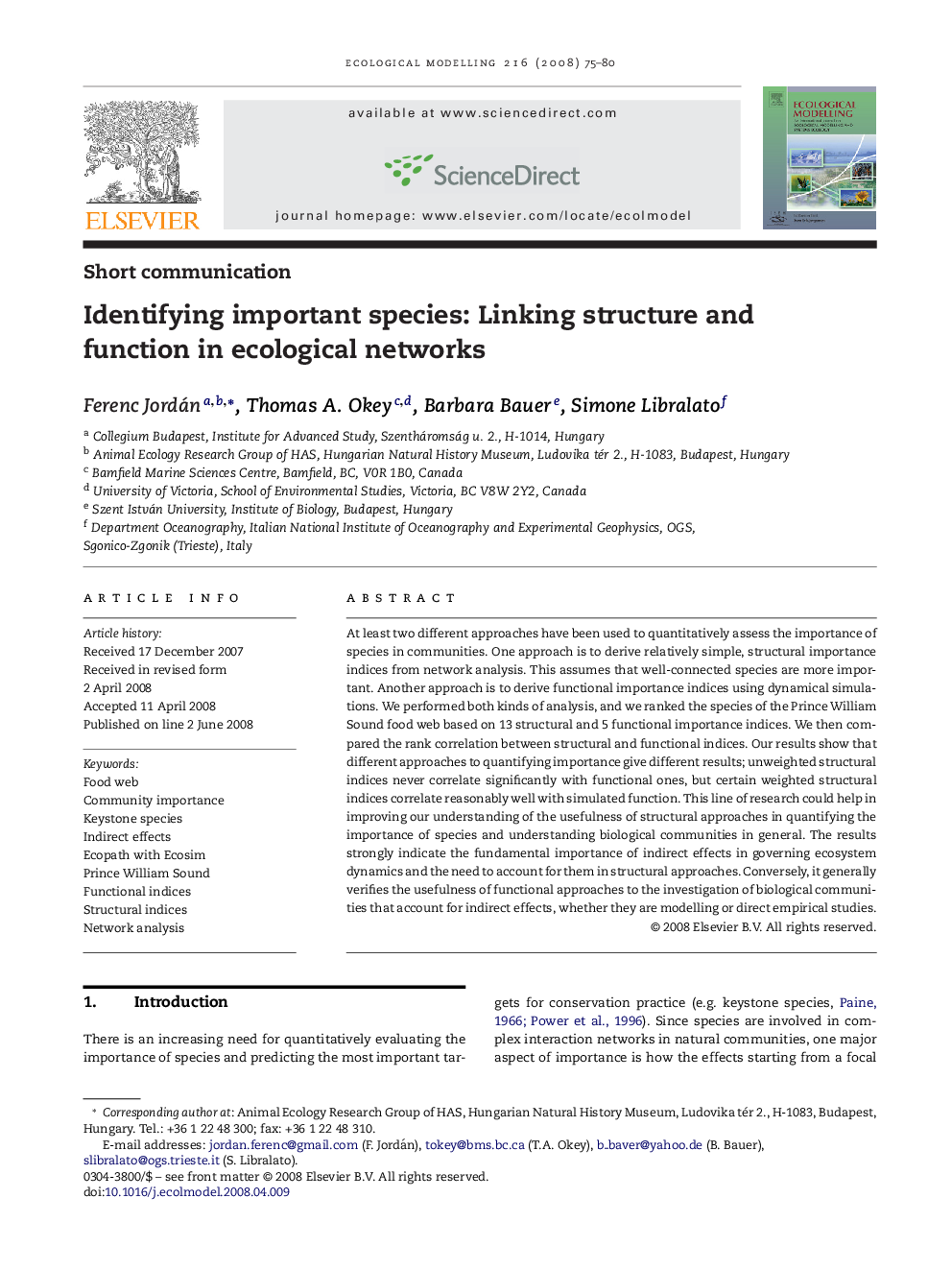| Article ID | Journal | Published Year | Pages | File Type |
|---|---|---|---|---|
| 4378093 | Ecological Modelling | 2008 | 6 Pages |
At least two different approaches have been used to quantitatively assess the importance of species in communities. One approach is to derive relatively simple, structural importance indices from network analysis. This assumes that well-connected species are more important. Another approach is to derive functional importance indices using dynamical simulations. We performed both kinds of analysis, and we ranked the species of the Prince William Sound food web based on 13 structural and 5 functional importance indices. We then compared the rank correlation between structural and functional indices. Our results show that different approaches to quantifying importance give different results; unweighted structural indices never correlate significantly with functional ones, but certain weighted structural indices correlate reasonably well with simulated function. This line of research could help in improving our understanding of the usefulness of structural approaches in quantifying the importance of species and understanding biological communities in general. The results strongly indicate the fundamental importance of indirect effects in governing ecosystem dynamics and the need to account for them in structural approaches. Conversely, it generally verifies the usefulness of functional approaches to the investigation of biological communities that account for indirect effects, whether they are modelling or direct empirical studies.
